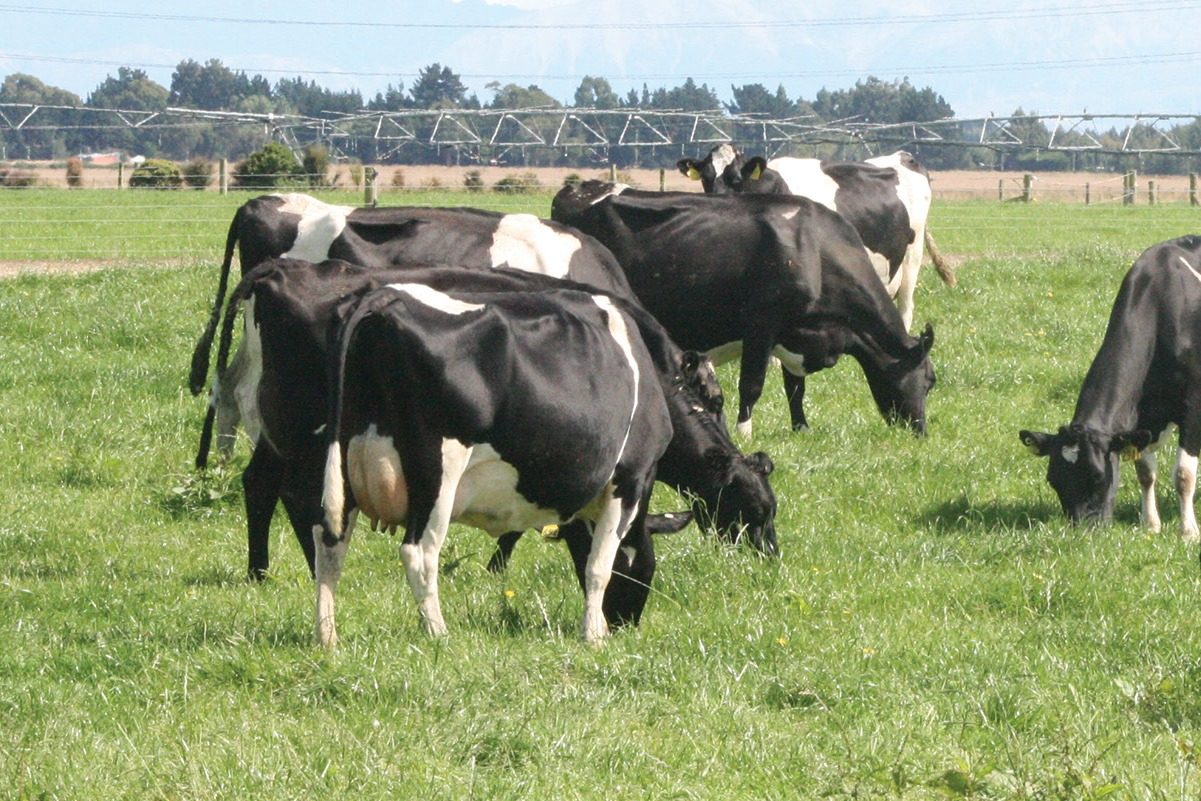Dairy’s contribution to NZ
Stand up and be proud of the contribution dairying is making to the country’s economy. The "Solid Foundations: Dairy’s economic contribution to New Zealand" report shows dairy farming accounted for 3.2% of NZ's GDP in the last year. By Anne Lee.

Here’s the news you need to hear today, so stand up and be proud of the contribution dairying is making to the country’s economy.
The New Zealand dairy sector accounts for 35% of this country’s goods exports, generates more than 25% of the country’s foreign exchange receipts that come from goods and services, employs almost 55,000 people and pumps $3.6 billion directly into employees’ pockets, a new report has shown.
The Solid Foundations: Dairy’s economic contribution to New Zealand report, commissioned by Dairy Companies Association of New Zealand (DCANZ) and DairyNZ, was produced by economic consultancy firm Sense Partners. See the full report below.
It shows dairy accounted for $11.3b (3.2%) of GDP in the year to March 2023 with dairy farming contributing $8b of that or 2.2% of GDP and dairy processing the rest.
Māori now make up 16.5% of dairy farming employees and self-employed, up from 12.7% in 2015. The number of Māori employees has risen from 3693 in 2015 to 4040 in 2021.
Of the total people employed in the sector, 38,462 of them are onfarm.
Dairy processing jobs have increased 3.2% per year since 2019 while the wider manufacturing sector has lost jobs at an average rate of 0.2% per year.
Total dairy processing wages were $2.2b in the year to March 2023. [page 7]
Dairy farming jobs have been more resilient than others in the primary sector with job numbers only falling by 0.8% compared with 2.2% for the wider sector since 2019.
Dairy farmers paid $1.4b in wages in the year to March 2023 and the median annual wage is now $59,000, increasing at an average 8.6%/year since 2019. [page 9]
In several regions and rural districts dairying is a cornerstone employer – in Waimate, South Canterbury, for example, one in three jobs are in the dairy sector.[page 6]
Dairy also has a high employment share in South Taranaki (one in four jobs), Westland (one in 4.5 jobs), Southland (one in five jobs), and Matamata-Piako (one in 6.5 jobs).
The high median wages and employment share amplify the contribution the sector makes to incomes in many regions and districts.
In Waimate wages paid by the dairy sector made up 52% of total wages paid in the district.
The share was similarly high in South Taranaki (41%), Westland (44%), Southland (28%, and Matamata-Piako (24%). [page 8]
Dairy farming has been a shock absorber for regional economies, maintaining local spending even when milk prices drop, the report says.
Dairy farmers spent $7.9b on goods and services in the local economy in the year to March 2023, on top of $8b in returns to land, labour, and capital.
The level of spend has been stable and consistent over time, even as milk prices have fluctuated. Price volatility is absorbed in dairy farmers’ profits, while farms kept purchasing inputs from the wider economy.
Dairy farming is a top 10 purchaser in a third of all industries, representing 31.5% of GDP.
The sector’s cows are doing their bit too.
While the number of cows has fallen by 3.5% since the peak of just more than 5 million in 2015 production per cow has continued to increase, rising an average 2.4% per annum between 2015 and 2022. [page 32]
That’s helped drive increases in export value per cow with nominal value of exports per cow rising 57% since 2018. Adjusted for inflation, real product export values per cow have risen 19.7%.
The report highlights that while China is a significant purchaser of New Zealand’s dairy exports the dairy sector has a better country spread than several other exports. About 34% of New Zealand’s dairy exports go to China while 62% of the wood sector’s exports go to one country – also China.[page 22]
Hurdles
The report has identified rail and road links to ports as a significant risk to the sector along with port efficiencies.
Rail access to the Port of Tauranga, the largest dairy export port in New Zealand, is reliant on a single rail line, the East Coast Main Trunk.
Dairy exports rely on three ports for 85% of total exports – Tauranga, Lyttelton and Otago.
The road network converges on multiple chokepoints, many of which dairy relies on to get fresh milk to processing plants.
Delays at these chokepoints can cost industries hundreds of thousands of dollars per day, the report says.
At ports – the export point for almost all dairy exports – efficiencies need to improve.
While the volume of milk produced is not expected to increase, growth in other export industries will start to challenge dairy for space on deck.
Accommodating this growth, while preserving dairy exports at their current volume, will be a challenge without improvements in port efficiency.
Trade
While New Zealand’s bilateral and regional trade agreements have been highly beneficial, a range of tariffs still apply to dairy exports under them, the report says. [page 24]
“We estimate tariffs paid on our dairy exports to our top 20 markets are around $1.5bn.
In addition, we estimate non-tariff measures impose costs of around $7.8bn on New Zealand dairy exports.”
Read the full report here:





